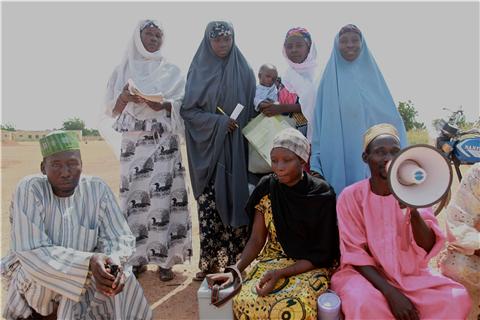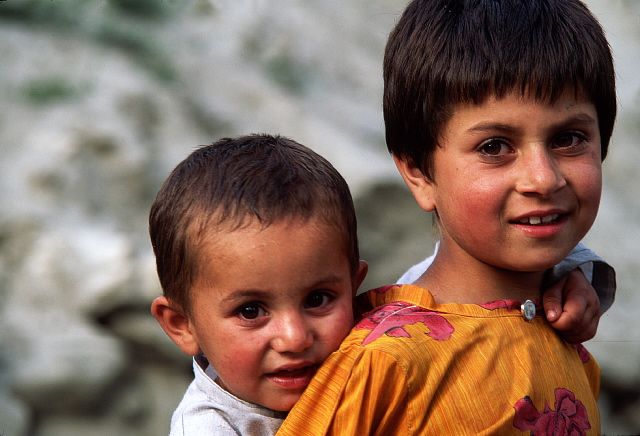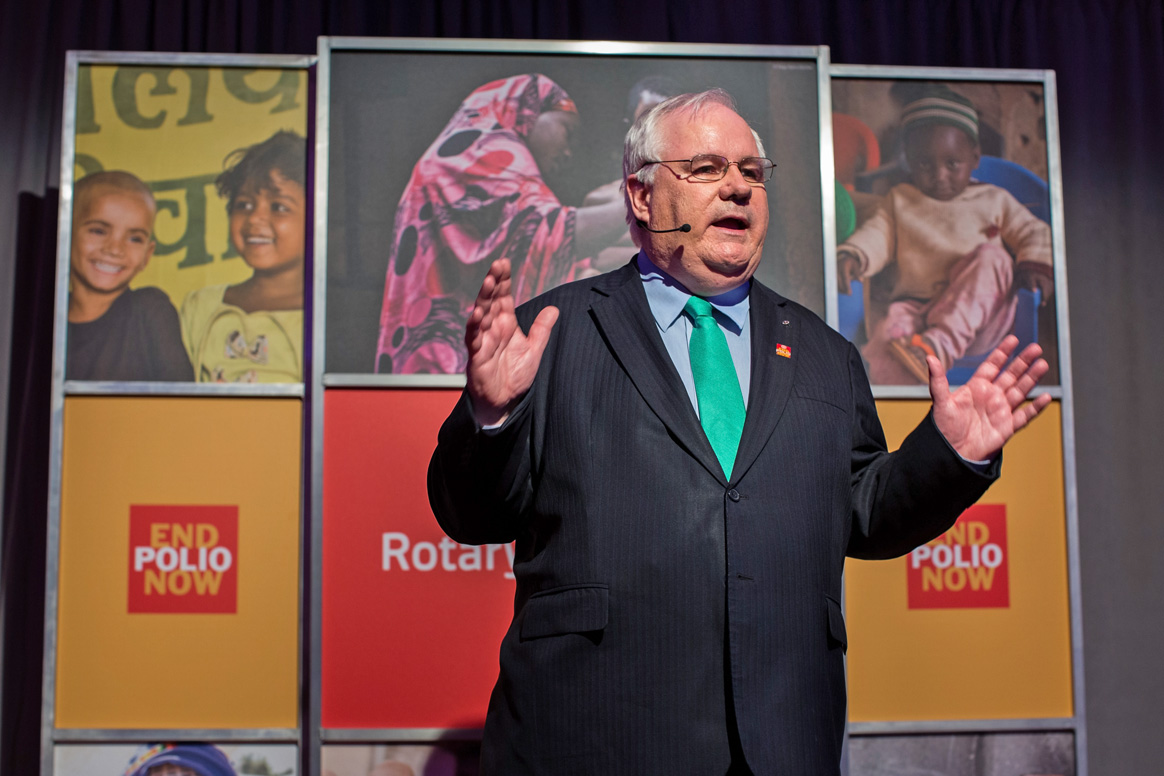New cases at lowest levels ever, but funding gap threatens progress

WHO/T. Moran
Geneva, Switzerland 24 May 2012– Despite the dramatic drop in polio cases in the last year, the threat of continued transmission due to funding and immunization gaps has driven the Global Polio Eradication Initiative (GPEI)to launch an Emergency Action Plan.
The plan aims to boost vaccination coverage in Nigeria, Pakistan and Afghanistan, the three remaining polio endemic countries, to levels needed to stop polio transmission. In parallel, health ministers meeting at the World Health Assembly this week are considering a resolution to declare “the completion of polio eradication to be a programmatic emergency for global public health,” in an acknowledgement of the urgency of the situation.
Polio eradication activities resulted in several landmark successes in 2010-2012. India, long-regarded as the nation facing the greatest challenges to eradication, was removed from the list of polio-endemic countries in February 2012. Outbreaks in previously polio-free countries were nearly all stopped.
Although the number of polio cases was lower in the first four months of this year than during the same period in any other year, cases continue to occur in Nigeria, Pakistan, Afghanistan, and Chad. Outbreaks in recent years in China and West Africa due to importations from Pakistan and Nigeria, respectively, highlight the continued threat of resurgence. By some estimates, failure to eradicate polio could lead within a decade to as many as 200,000 paralyzed children a year worldwide.
“Polio eradication is at a tipping point between success and failure,” said Dr. Margaret Chan, Director-General of the World Health Organization. “We are in emergency mode to tip it towards success – working faster and better, focusing on the areas where children are most vulnerable.”
Once achieved, polio eradication would generate net benefits of US $40-50 billion globally by 2035, with the bulk of savings in the poorest countries, calculated based on investments made since the Global Polio Eradication Initiative (GPEI) was formed and savings from reduced treatment costs and gains in productivity.
“We know polio can be eradicated, and our success in India proves it,” said Kalyan Banerjee, president of Rotary International, a global humanitarian service organization. “It is now a question of political and societal will. Do we choose to deliver a polio-free world to future generations, or do we choose to allow 55 cases this year to turn into 200,000 children paralyzed for life, every single year? ”
Full funding of new plan critical
Already, funding shortages have forced the GPEI to cancel or scale-back critical vaccination activities in 24 high-risk countries. This leaves more children vulnerable to contracting the disease, and exposes polio-free countries to the risk of re-emergence.
“All our efforts are at risk until all children are fully immunized against polio – and that means fully funding the global eradication effort and reaching the children we have not yet reached,” said UNICEF Executive Director Anthony Lake. “We have come so far in the battle against this crippling disease. We can now make history – or later be condemned by history for failing.”
Full implementation of the Emergency Action Plan (EAP) is currently hindered by a critical funding gap of nearly US$1 billion through 2013.
“We are all responsible for creating a polio-free world while we still can,” said Chris Elias, president of global development at the Bill and Melinda Gates Foundation. “Achieving this goal is a critical step in protecting all children from vaccine-preventable diseases.”
The Global Emergency Action Plan

Intensified focus on worst-performing areas of Nigeria, Pakistan and Afghanistan to increase vaccination coverage by end of 2012 to levels needed to stop transmission;
• New approaches tailored to each country to tackle persistent challenges and improve polio vaccination campaign performance;
• Heightened accountability, coordination and oversight to ensure success at every level of government and within every partner agency and organization;
• Surge of technical assistance and social mobilization capacity.
Working in emergency mode
We need everyone’s commitment and hard work to eradicate polio and cross the finish line,” said Dr. Thomas Frieden, director of the U.S. Centers for Disease Control and Prevention (CDC). “It won’t be easy, but together we can eradicate polio forever and for everyone.”
Already since the start of the year, the GPEI has moved its operations into emergency mode. CDC has activated its Emergency Operations Center; UNICEF has officially activated an Interdivisional Emergency Coordinating Committee operating directly under the Deputy Executive Director; and WHO has moved its polio operations to its Strategic Health Operations Centre (SHOC). Such measures are reserved for responding to global health emergencies — such as the H1N1 pandemic or the 2004 Southeast Asia tsunami — and will enable a massive surge in technical capacity, real-time tracking of program performance and the immediate implementation of corrective action plans as necessary. Also this year, the Trustees of the Rotary Foundation reaffirmed polio eradication as the organization’s most urgent priority. In addition, Rotary senior leaders have launched a series of one-on-one meetings with the heads of state of the polio endemic countries.



